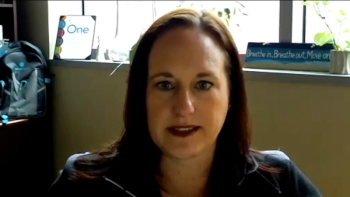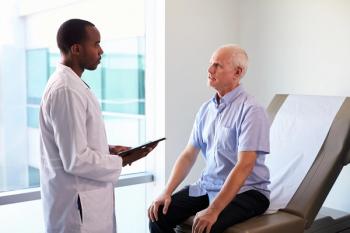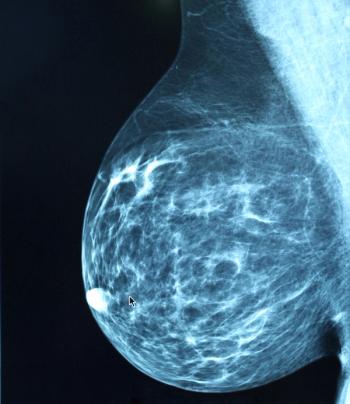
- Oncology NEWS International Vol 16 No 1
- Volume 16
- Issue 1
Teleoncology Improves Access to Care for Rural Patients: As Utilization Goes Up, Costs Go Down
In rural areas, access to quality cancer care is especially challenging. The cumbersome process of traveling long distances for care is exacerbated by the symptoms associated with disease, leaving many rural cancer patients undertreated. However, a relatively new telecommunication technology offers one way to overcome the geographic barriers faced by rural Americans. Cancer Care & Economics (CC&E) spoke with Ryan J. Spaulding, PhD, director of the Center for Telemedicine and Telehealth at Kansas University Medical Center (KUMC), Kansas City, about how telemedicine helps serve patients in rural Kansas.
ABSTRACT: In rural areas, access to quality cancer care is especially challenging. The cumbersome process of traveling long distances for care is exacerbated by the symptoms associated with disease, leaving many rural cancer patients undertreated. However, a relatively new telecommunication technology offers one way to overcome the geographic barriers faced by rural Americans. Cancer Care & Economics (CC&E) spoke with Ryan J. Spaulding, PhD, director of the Center for Telemedicine and Telehealth at Kansas University Medical Center (KUMC), Kansas City, about how telemedicine helps serve patients in rural Kansas.
CC&E: Please briefly describe your position at the Kansas University Center for Telemedicine & Telehealth.
DR. SPAULDING: For the past 5 years, I have been the director of operations for the Center, administering all telehealth projects, research activities, and daily operations. I work closely with our medical liaison, Gary C. Doolittle, MD, who is an oncologist. Dr. Doolittle also provides teleoncology consultations. We have been delivering telemedicine in Kansas since 1991.
CC&E: What inspired the development of the Telemedicine Center?
DR. SPAULDING: During the first Gulf War, a pediatrician from Hays, Kansas, which is about 300 miles west of Kansas City, saw a news story about the military using telemedicine equipment, and he thought, "Well, why can't we do that in Kansas?" He contacted the KU Medical Center, and we started researching the potential; we eventually put together a single telehealth connection to Hays Medical Center. This technology hadn't been used to a great extent for health care before that.
CC&E: In a nutshell, what kind of technology is involved in delivering telemedicine?
DR. SPAULDING: The technologies depend on the type of clinical service being delivered, but generally we use high-end video conferencing equipment to allow the health care providers to talk directly to the patient. We supplement that video conferencing equipment with electronic peripheral devices, such as otoscopes, electronic stethoscopes, and general examination cameras. In effect, patients can be examined much like in an office visit.
CC&E: What kind of learning curve do patients need in order to utilize the technology involved in telemedicine?
DR. SPAULDING: None, really. Patients simply go to their local health care facility and are brought to the telemedicine suite where the equipment is located. They sit down in the chair or lie on the examination table. A nurse is usually in the room with them, guiding them through the process.
CC&E: How have patients reacted to this experience?
DR. SPAULDING: Patients across all specialties and across the various demographics have consistently rated telemedicine very highly. In our experience, we have had literally fewer than five patients come to a telemedicine consultation and decide not to participate, and that has been in 15 years. So, the data are very supportive of telemedicine. In fact, a lot of sites do not even do satisfaction surveys anymore; they have moved on to more important research.
CC&E: Are patient privacy issues a concern with telemedicine?
DR. SPAULDING: We keep the connection secure through encryption and private networks. Technically speaking, however, HIPAA exempts video conferencing from its privacy codes because it is not stored patient information. It is a one-time interactive video conference that is not recorded, so privacy concerns about sensitive patient information are minimized.
CC&E: How many patients are served by the Center, and approximately how many of those are cancer patients?
DR. SPAULDING: We see about 3,000 patients per year, and out of that population, about 300 or so are cancer patients who receive live interactive consultations. These patients are all from rural areas in Kansas.
CC&E: Do you see telemedicine as part of the initiative to move toward a fully-integrated health information technology (HIT) system?
DR. SPAULDING: Yes. I think there will come a time when all the technologies are integrated right at the desktop PC level. We now have the ability to do high-quality video conferencing from our desktop PCs, and, in fact, some of our providers are doing just that. So, I think all of that will run through the national infrastructure, and the telemedicine community is working with the HIT coordinators at the federal level to integrate the two concepts.
CC&E: Is telemedicine cost-effective, compared with traditional community care?
DR. SPAULDING: Cost analysis in this area is complex; however, we have done some studies, and, depending on the specialty, telemedicine can be cost-effective for different entities of care. For example, teleoncology is obviously cost-effective for the patients themselves. It's also cost-effective for the receiving rural facility, because they can keep their pharmacy, x-ray, and other patient charges locally. For a providing facility like us, it is cost-effective to the extent that our oncologists don't have to travel to those distant facilities.
But overall, compared to a patient being seen in a traditional clinic setting, telemedicine is a little bit more expensive. This is due partly to the greater number of patients served in the traditional setting, thus reducing the average per-visit cost. But the early cost research is promising; it shows that as utilization of telemedicine increases, costs will indeed decrease to the same level as, or even less than, traditional medical consults.
CC&E: What is the Center currently doing to advance telemedicine?
DR. SPAULDING: We typically grow our services by writing and receiving new federal funding grants. We are currently implementing a telepathology program, which we expect to expand. Our growth is somewhat incremental because of the high start-up costs for each new site, but after the inital outlay, the program is generally self-sustaining.
CC&E: Any closing thoughts about your experience thus far in this new field?
DR. SPAULDING: Telemedicine may prove to be the best solution for increasing access to care for underserved cancer populations, such as those in rural areas. We are in the process of adding applications that will help providers deliver the cost-effective efficiencies needed for today's fiscally challenged health care environment. Programs are continually being developed, and I expect telemedicine to be integrated with the HIT initiative that's currently gaining traction. Embracing this technology and its possibilities will help promote high-quality, accessible health care for patients in underserved areas throughout the country.
Articles in this issue
almost 19 years ago
Nab-Paclitaxel Bests Docetaxel in First-Line Met Breast Caalmost 19 years ago
Congress Plans to Keep NCI Operating at FY2006 Budgetalmost 19 years ago
Lenalidomide Is Active in Relapsed and Refractory NHLalmost 19 years ago
Self-Hypnosis Reduces Anxiety During Breast Biopsyalmost 19 years ago
With Decrease in HRT Use, Breast Ca Incidence Rates Fallalmost 19 years ago
MK-0457 'Glides Past' Bcr-Abl T315i Mutationalmost 19 years ago
Dasatinib Superior to High-Dose Imatinib in Resistant CMLalmost 19 years ago
Lilly 2006 Oncology on Canvas Winners 'Embrace Life'Newsletter
Stay up to date on recent advances in the multidisciplinary approach to cancer.

















































































